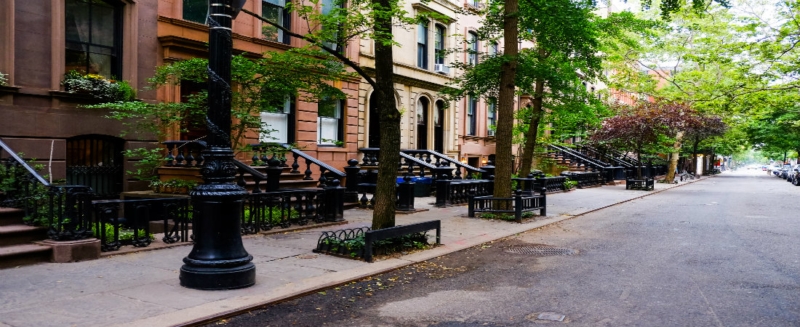How to pick a new neighborhood
Most tenants looking for a place to rent will spend much of the time looking at what kind of space they’ll have inside the four walls of an apartment. That makes sense, since it’s what you will see daily, and there’s an important connection that needs to be made.
But the space outside those walls will be just as important. If you pick the wrong neighborhood, it can easily sour the entire rental experience.
Before you start your analysis, take time to determine the things you consider most important in a neighborhood, such as neighborhood walkability, safety, schools, nightlife, shopping, and other amenities that make life easier and more fun.
Fortunately, there are many tools available to help you learn more about potential neighborhoods. Here’s what you need to know:
Neighborhood Safety
The level of safety in your new neighborhood is a concern for everyone, but it will rank even higher in importance for families with children. Whatever the level of concern, it’s not difficult to get started with your analysis.
The first move is to look around the new neighborhood with a purpose, with your eyes and ears wide open. Some red flags will be more obvious than others, such as seeing homes and yards in the neighborhood that are not well kept, signs of vandalism, graffiti, boarded up buildings and the mix and quality of commercial areas.
Other reasons to be concerned might be less obvious. Do you notice very few people out and about? If streets seem abandoned, that’s not a good sign. Most healthy neighborhoods will have lots of activity, with people of all ages out and about, whether they’re at the local grocery store, cafe or coffee shop, or they’re dropping off or picking up their kids from school.
It’s a good idea to spend time in the neighborhood at different times of day, to make sure the atmosphere remains consistent. You should also try to talk to people who live in the neighborhood to get their take on it. Most people won’t mind talking about where they live.
You’ll also want to back up your research by checking out a number of websites that provide information about crime by neighborhood and area. Sites like crimereports.com and mylocalcrime.com have much information about crime in a given area, while the sites for local law enforcement agencies also can be helpful.
Neighborhood Schools
School quality is obviously a big issue for families with kids, but good schools also are an excellent indication of a good place to live, whether you have children or not. Better schools also usually mean higher property taxes, which in turn can lead to higher rental rates, something to know going in.
Online tools are available to help you dig deeper. One site, greatschools.org, offers a variety of information about school districts, such as ratings, average class size, teacher education level and racial mix.
Local newspapers also can be a great source of information. By using a paper’s website search function, you can see what kind of news schools have been making. Newspapers report on grades districts are receiving for standardized testing, school achievements and various problems.
Neighborhood Transportation
Being able to get to where you want to go in a reasonable amount of time will be near the top of your considerations when looking for a new place to live.
You will need to analyze all of the options, from walking and biking to driving, buses and trains. At least some of these options need to fit with the routes you will be taking often for work, school and shopping. Visiting the area at different times of day also will be helpful, considering traffic volumes can alter greatly at different times.
The website walkscore.com can give definition to your research. It provides scores by address for various modes of travel, including scores for being car-dependent (or your walk score), availability of buses, trains, and routes available for biking.
Neighborhood Livability
After you nail down the basics, you will want to check off the boxes that are important for your quality of life.
You’ll want to know about the parks, library, outdoor recreation, daycares, gyms, coffee shops and grocery stores in the area, and how easy they are to access. Getting a read on the community character also will be helpful, such as the kind of events that are regularly held, available sporting events and the variety of night life.
City-data.com is a good clearinghouse for community information by zip code. It provides a laundry list of data, such as cost of living, demographics, jobless rate, marital statistics, walking mean times, housing values and even most common last names.
Ron Carter is the former Business Editor of the Columbus Dispatch.
Home Improvements In A Transitional Neighborhood
Increase Property Value With Neighborhood and Community Efforts
Sign up for Ilyce’s Newsletter: Love, Money + Real Estate







Leave A Comment